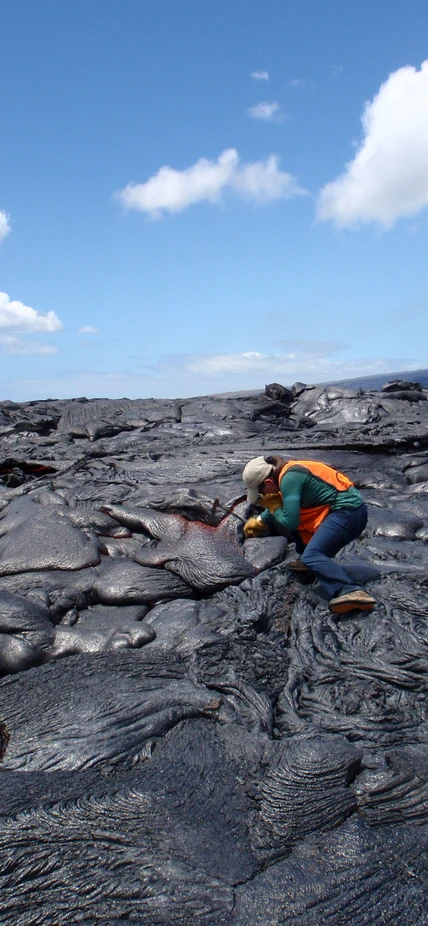Diana Roman’s job sounds like a blast. Pun very much intended. Although many people find volcanos scary, she knows how to make them fun and, more importantly, fascinating.
A staff scientist at Carnegie’s own Department of Terrestrial Magnetism, Roman told us all about what happens “When the Volcano Stirs” during a public program at our Washington, DC, headquarters building on Wednesday.
Roman explained the different ways that scientists monitor volcanos to forecast eruptions. And she kept the audience in stitches nearly the entire time with examples referencing daily life and popular culture.
She illustrated the fact that as magma rises closer to the Earth’s surface, the gasses dissolved in it start to come out of solution by comparing the phenomenon to the carbonated fizzing when you open a bottle of Diet Coke.
Later, she explained that studying the sound frequencies of volcanos is an important part of forecasting efforts, saying that high-frequency volcanos are like Mariah Carey and low-frequency volcanos are like Barry White.
“When Barry White shows up at your volcano, you know things are about to get real,” she said to the audience’s delight.
But nothing got a bigger laugh than when she detailed the discovery that some volcanos go through quiet periods, called quiescence, before their explosions. The correlation between the length of the quiescence and the magnitude of the eruption is an excellent forecasting tool.
“Longer quiet periods predict larger explosions. Those of you with small children in the audience may recognize this phenomenon,” she joked. “The kids are playing in the other room, you realize you haven’t heard them in a while. The longer it’s been, the bigger mess you’re going to find. The volcano works the same way.”
Developing excellent communication skills like Roman’s, which engage the public and put everyone at ease about a possibly scary subject, should be important to every scientist. But it’s especially crucial for those, like Roman, whose research topic is so vital to public safety, and it’s clearly a duty to the public that she takes seriously and works hard to do well.
We’re glad she’s out in the field learning how to keep people safer, and we’re even happier that she’s part of our Carnegie family.
